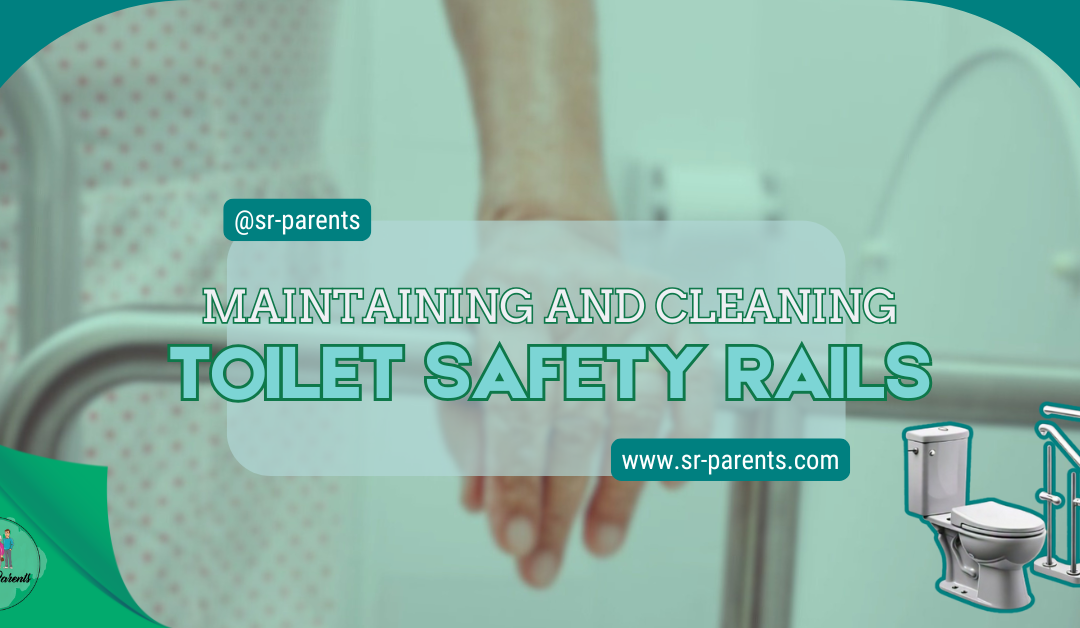Maintaining and cleaning toilet safety rails is crucial for ensuring this essential bathroom fixture’s ongoing safety and hygiene. Over time, maintaining and cleaning toilet safety rails becomes essential as they can accumulate grime, bacteria, and general wear that may compromise their stability and cleanliness. For individuals who rely on them daily for support and mobility, regular upkeep extends the lifespan of the rails and keeps them safe and reliable for use. Simple maintenance steps and targeted cleaning can make a significant difference in both functionality and hygiene.
This guide will explore practical, easy-to-follow techniques to keep your toilet safety rails in optimal condition. From identifying the best cleaning products to understanding the frequency of checks, you’ll find everything you need to maintain a clean and secure bathroom setup. Whether it’s preventing rust, managing grime, or ensuring a solid installation, these tips will make upkeep straightforward and effective, helping create a safe environment everyone can count on.
Contents
Tips for Maintaining and Cleaning Toilet Safety Rails: A Guide to Durability
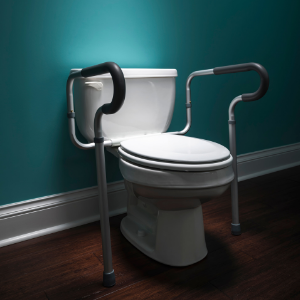
Toilet safety rails offer essential support to individuals with mobility challenges, helping prevent bathroom falls and accidents. They are vital to a safe and accessible bathroom, especially for seniors and anyone with impaired strength or balance. However, to ensure these safety devices can provide reliable assistance for years, adopting a rigorous maintenance and cleaning routine is necessary.
Regular upkeep preserves the functional integrity of the toilet safety rails and ensures they remain hygienic and free from harmful bacteria. Understanding the correct cleaning techniques, recognizing signs of wear and tear, and being familiar with troubleshooting common issues are part of effective maintenance. By committing to consistent care, users can rely on their toilet safety rails for support whenever needed.
Key Takeaways
Wiping down safety rails daily and deep-cleaning periodically helps maintain hygiene, preventing harmful bacteria accumulation.
Regular checks for loose screws, rust, or wear ensure that the rails remain sturdy, supporting safe use for those relying on them.
Choosing mild cleaning agents prevents surface damage, preserving the integrity and appearance of materials like stainless steel or coated finishes.
Disinfecting crevices and undersides is essential to maintain thorough hygiene, especially in shared or high-use settings.
Replacing worn grips and addressing rust or corrosion as they arise maximizes toilet safety rails’ durability and reliability over time.
Understanding Toilet Safety Rails
Toilet safety rails provide essential support and stability for individuals with mobility issues. They play a crucial role in making the bathroom a safer place.
Significance of Toilet Safety Rails
Toilet safety rails are designed to assist individuals with difficulty sitting down and standing up from the toilet. These supportive fixtures reduce the risk of falls and enhance the independence of those with reduced mobility, particularly the elderly and people with disabilities.
Types of Toilet Safety Rails
Freestanding Rails: These stand-alone and are positioned around the toilet.
Toilet Frame Rails: Attached directly to the toilet frame for stability.
Wall-mounted Rails: Installed on the bathroom wall and may fold against the wall when not in use.
Floor-to-ceiling Rails: Extend from the floor to the ceiling, providing robust support.
Different models cater to various needs, as some toilet safety rails attach directly to the toilet, while others may require wall or floor installation.
Key Features to Consider
When selecting toilet safety rails, important features include:
Weight Capacity: They typically support between 250 to 300 pounds.
Material: Common materials are stainless steel, aluminum, or heavy-duty plastic, each offering unique benefits.
Adjustability: Many rails offer adjustable height and width to fit different toilets and accommodate various user sizes.
Installation Requirements: Some require drilling or professional installation; others are easy to install without tools.
Understanding these key features will guide consumers in choosing the right toilet safety rails for their needs.
Preventative Maintenance
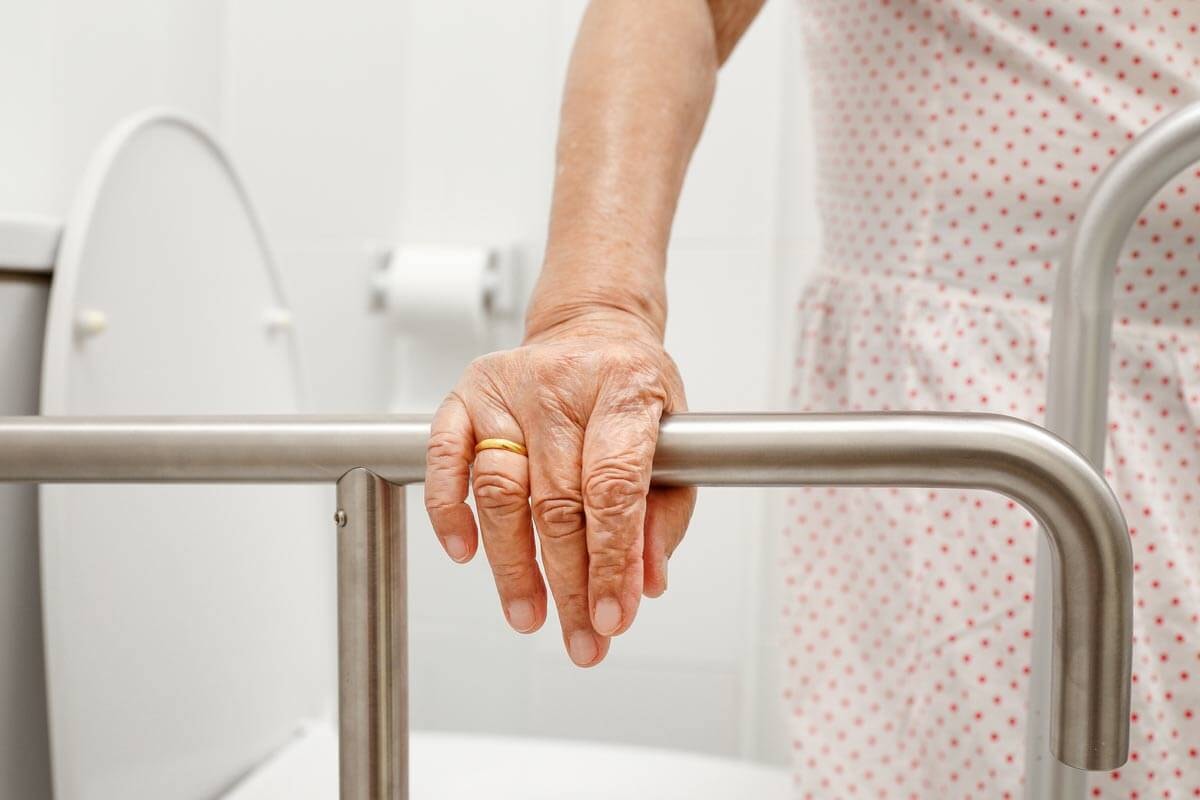
Maintaining and cleaning toilet safety rails is essential for ensuring their longevity. Preventative maintenance involves regular inspection, correct usage, and consideration of environmental factors that can affect the durability of this equipment.
Regular Inspection Routines
Toilet safety rails, being vital for stability, require consistent inspections. One should examine all connecting points and hardware for signs of wear, ensuring that pieces are tightly secured. Users can refer to guidelines for cleaning and maintaining their toilets for proper inspection techniques.
Proper Handling and Use
Toilet safety rails must be used as intended. They should support an individual’s weight without being subjected to excessive force that could compromise structural integrity. For detailed instructions on installation and usage, individuals can reference a guide to installing toilet safety rails, which underscores the importance of following the manufacturer’s guidelines.
Environmental Considerations
The environment where the toilet safety rails are installed can impact their condition. Areas of high moisture, such as bathrooms, are prone to rust and corrosion. Owners should keep the area well-ventilated and consider using mild cleaning solutions as recommended in resources like the A-Z Guide for Toilet Maintenance to prevent material breakdown.
Did You Know?
Abrasive cleaners can scratch and damage the surface of toilet safety rails, particularly those with a coated finish. They should be avoided to preserve the integrity of the rails.
Maintaining and Cleaning Toilet Safety Rails: Cleaning Techniques
Maintaining the cleanliness of toilet safety rails is crucial for ensuring their longevity and effectiveness. Regular cleaning prevents the build-up of dust and potential corrosion, while periodic deep cleaning preserves the integrity of the rails.
Daily Cleaning Tips
For daily maintenance, one should:
Wipe down the rails with a soft cloth dampened with a mild detergent.
Dry the rails thoroughly to prevent moisture accumulation, which can lead to rust.
Deep-Cleaning Methods
When performing a deep clean, consider the following steps:
Disassemble any removable parts of the toilet safety rails to clean hard-to-reach areas.
Use a non-abrasive brush or sponge to scrub any visible stains or rust spots.
Appropriate Cleaning Agents
Selecting the right cleaning agents is crucial:
Opt for mild detergents or soap, as aggressive chemicals can damage the rail’s surface.
For stainless steel rails, consider using cleaners designed specifically for stainless steel to sustain the finish and prevent damage.
Sanitization Procedures
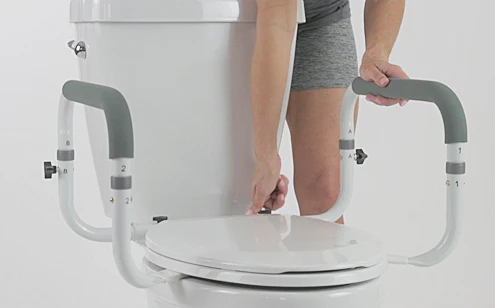
Maintaining and cleaning toilet safety rails is crucial for maintaining hygiene and preventing the spread of germs. This section will detail the protocols and techniques for thoroughly disinfection and sanitization of these essential fixtures.
Disinfection Protocols
Toilet safety rails should be disinfected at least once daily in households and more frequently in public or healthcare facilities. Use an effective EPA-registered disinfectant against a broad spectrum of bacteria and viruses.
Steps for Disinfection:
Pre-Cleaning: Remove visible soil and debris from the rails with a damp cloth.
Application of Disinfectant: Spray or wipe the disinfectant onto the surface of the rails, ensuring full coverage.
Contact Time: Allow the disinfectant to dwell on the surface for the time specified by the manufacturer to kill germs effectively.
Drying: Let the rails air dry, or use a clean cloth to wipe them down if immediate use is necessary.
For in-depth guidelines on disinfecting and achieving a high standard of appearance, one can refer to expert resources.
Sanitizing Hard-to-Reach Areas
Pay special attention to the undersides, crevices, and any adjustable components of the toilet safety rails, as these areas can harbor pathogens.
Use of Brushes: Employ small brushes to scrub the crevices and joints where germs may accumulate.
Targeted Spray: Apply the disinfectant using a directed spray bottle to ensure it reaches all hidden areas.
Regular Inspection: Perform regular checks to identify any signs of rust or wear that may compromise the integrity of the rails and clean them accordingly.
Remember, effective sanitization techniques include the disinfectant used and the thoroughness of the cleaning process.
Wear and Tear Management
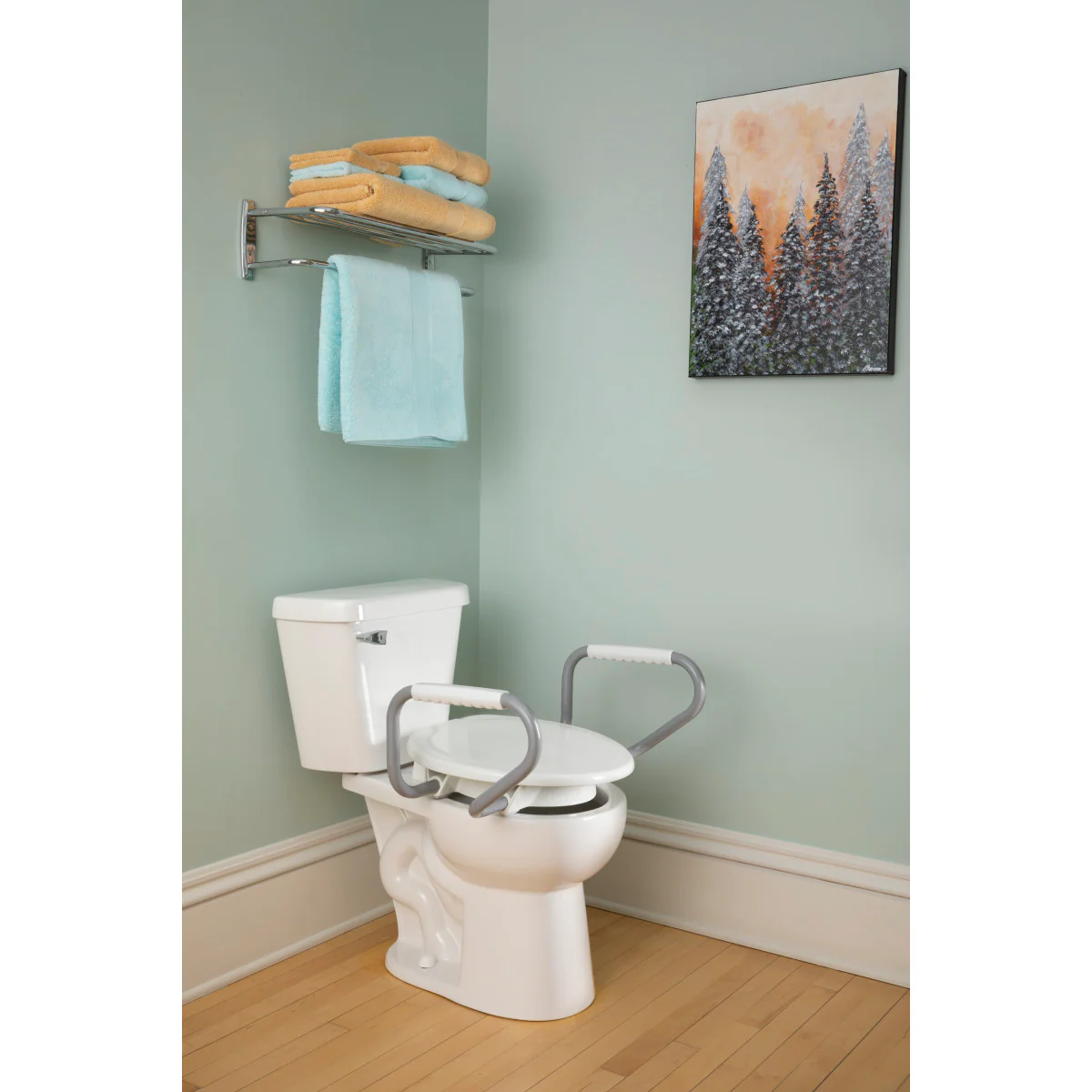
Toilet safety rails are crucial for preventing accidents, but maintaining and cleaning toilet safety rails requires regular inspection and maintenance to stay functional and safe.
Addressing Common Wear Areas
Grips often show signs of wear first. Users should regularly check for any tears or peeling that can compromise their grip.
Fasteners, such as screws and bolts, can loosen over time due to regular use. They need to be checked and tightened to ensure rail stability.
Replacement Timelines
Metal Components: They may rust or corrode, especially in the humid conditions of a bathroom. An annual inspection is advised.
Non-slip Feet: Replace these every 6 months depending on daily usage to prevent slippage.
Troubleshooting Common Issues
Users may encounter a few common issues when maintaining and cleaning toilet safety rails. Addressing these effectively can prolong the lifespan of the equipment and ensure user safety.
Loose Fixtures and Fittings
Regular maintenance is crucial to prevent the loosening of fixtures and fittings. Users should perform monthly checks to tighten any screws or brackets that have become loose. A simple screwdriver may be all that is needed. For example, Medline Toilet Safety Rails require inspection of the snap buttons and adjustment hand knobs to ensure security.
Rust and Corrosion Prevention
Toilet safety rails are often exposed to moisture, leading to rust or corrosion. Preventative measures can help minimize this risk. Clean the rails with a mild, non-abrasive cleaner and dry thoroughly.
Regular application of a silicone-based lubricant can help prevent rust. It’s also advised to avoid harsh chemicals that can damage the finish and integrity of the rails.
Non-Slip Feature Maintenance
The non-slip features of toilet safety rails are vital for user confidence and safety. Over time, grips may wear down or become slippery. Users should regularly clean grips with a mild soap solution and inspect them for wear.
Replacement of worn grips is necessary to maintain a secure surface. It’s imperative to check that non-slip features are fully functional and provide adequate traction.
Professional Care and Services
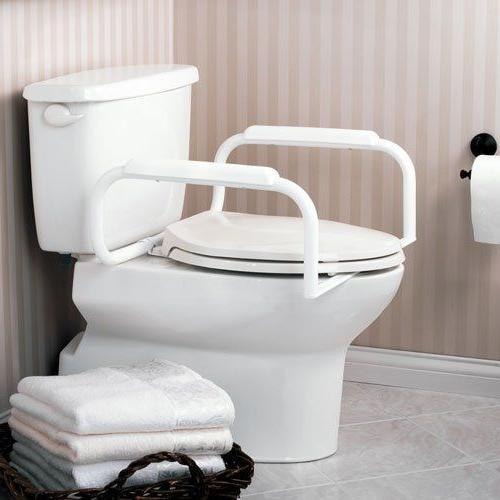
Toilet safety rails are crucial for support and stability, especially in the homes of individuals with mobility issues. They require routine maintenance for optimal performance and safety. Sometimes, the expertise of a professional may be essential to ensure that the bathroom remains a secure environment.
When to Seek Professional Help
One should consider professional help if the toilet safety rails:
Show signs of structural damage such as cracks or corrosion.
Have loose components that cannot be tightened through standard at-home methods.
It must be modified or adapted to changing mobility needs beyond basic adjustments.
Selecting a Maintenance Service
In choosing a maintenance service for toilet safety rails, crucial factors include:
Certifications and Expertise: Verify that service providers have the qualifications and experience.
References and Reviews: Look for testimonials and feedback from prior customers to gauge reliability and customer satisfaction.
Service Plans: Select services offering regular maintenance schedules to prevent issues before they arise.
Here’s an additional video on how to install toilet safety rails.
By: PELEGON
Ensuring Lasting Safety and Hygiene: The Importance of Regular Maintenance for Toilet Safety Rails
In conclusion, maintaining and cleaning toilet safety rails is essential to ensuring they provide the reliable support they were designed for. Regular inspections and proper cleaning techniques help prevent the accumulation of grime and bacteria that can compromise the safety and hygiene of these vital fixtures. By committing to a consistent maintenance routine, users can ensure that their toilet safety rails remain functional and secure, especially for individuals with mobility challenges.
Implementing daily and deep-cleaning practices will prolong the rails’ lifespan and enhance the overall bathroom environment. Each step contributes to a safer space, from using mild detergents to choosing the right cleaning agents. Additionally, attention to wear and tear—such as checking grips and fasteners—will help maintain the structural integrity of the rails, ensuring they continue to support users effectively.
By adopting these straightforward practices, individuals can enjoy peace of mind knowing their toilet safety rails are hygienic and reliable. Whether through routine maintenance or seeking professional assistance when needed, the effort put into caring for these fixtures pays off in safety and confidence. Ultimately, keeping toilet safety rails in top condition allows for a more secure and accessible bathroom experience.
Frequently Asked Questions
Proper maintenance and cleaning are critical to the longevity and safety of toilet safety rails. This section addresses commonly asked questions to ensure optimal care.
What is the Best Cleaning Agent for Toilet Safety Rails?
The ideal cleaning agent for toilet safety rails is a mild detergent mixed with water. This solution effectively cleans without causing damage to the materials. Products specifically recommended for bathroom fixtures should be preferred.
How Often Should Toilet Safety Rails Be Cleaned for Optimal Maintenance?
Toilet safety rails should be cleaned at least once a week to maintain hygiene and prevent the build-up of dirt and germs. These can degrade the rails over time.
What Steps Can Be Taken to Ensure the Stability of Toilet Safety Rails Over Time?
To ensure stability, routinely inspect the hardware and mounting points of the toilet safety rails.
Stay Informed on the Latest in Senior Care
Embark on a journey of compassion and knowledge with us! Follow our social media channels for touching stories, expert advice, and essential tips for senior care.
? Website: Visit sr-parents.com for comprehensive articles and resources on senior health, wellness, and caregiving.
? Pinterest: Find endless caregiving ideas, home solutions, and senior-friendly activities at pinterest.com/seniorparents.
? Facebook: Join our supportive community at facebook.com/sr.parents. Connect with caregivers, share experiences, and find daily inspiration.
? Twitter: Follow twitter.com/senior_parents for timely updates, news, and trending discussions on senior care.
? Instagram: Explore instagram.com/seniorparents for inspiring stories, caregiving tips, and a closer look into the lives of seniors and their families.
Stay connected, uplifted, and well-informed with our latest articles and senior care stories.

